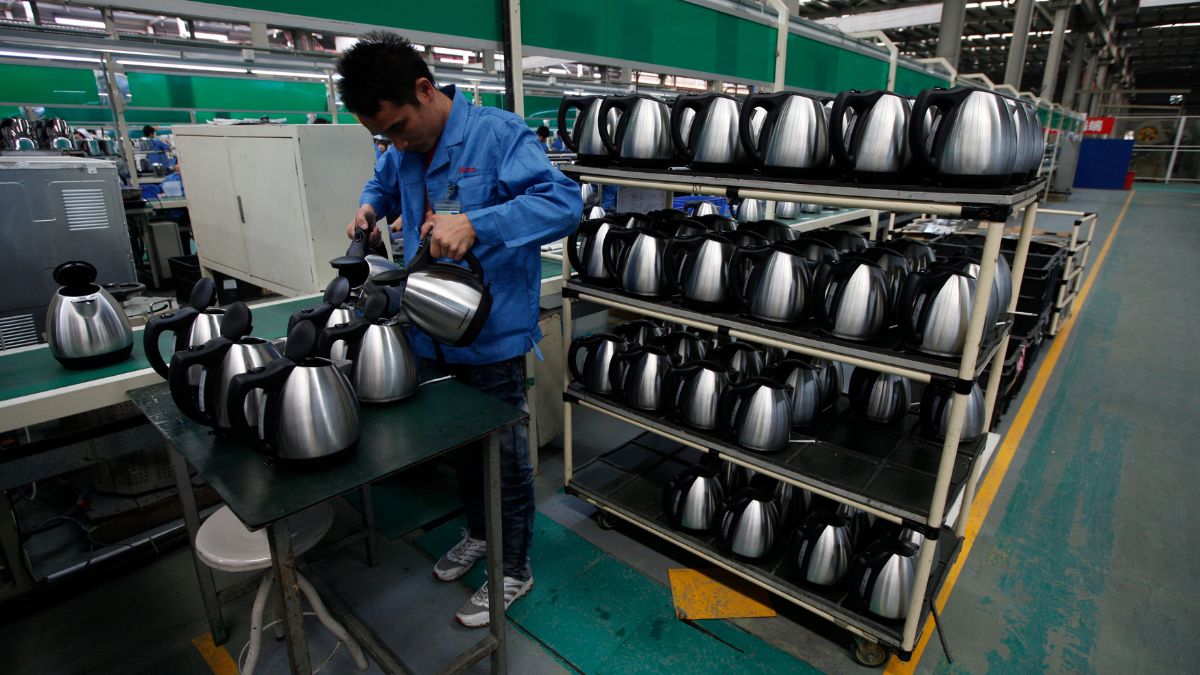China, the world’s second-largest economy, is grappling with weak consumer demand, a deepening property crisis, and high unemployment rates, all of which have slowed growth and raised fears of deflation.
In an effort to tackle these challenges, the Chinese government is doubling down on consumer-focused initiatives.
One such effort is the expansion of its trade-in programme, offering subsidies for a wide range of household appliances and digital goods.
This comprehensive programme, aimed at reviving household consumption, has sparked debate among economists and analysts over whether it can deliver the substantial economic boost Beijing hopes for.
China expands scope of subsidies
China’s trade-in scheme, originally launched in March 2024, allowed consumers to replace old appliances and vehicles with subsidies funded by special treasury bonds.
The programme’s initial budget of 150 billion yuan ($21 billion) has now been augmented with 81 billion yuan ($11 billion) allocated for 2025.
Newly included items, such as microwave ovens, dishwashers, rice cookers, and water purifiers, join previously eligible products like refrigerators, air conditioners, televisions, cellphones, and hybrid vehicles. Consumers can receive subsidies ranging from 15 per cent to 20 per cent, with a cap of 6,000 yuan for certain digital devices.
Officials have praised the programme’s early success. Li Gang from the Ministry of Commerce reported that the initiative had generated 920 billion yuan in auto sales and 240 billion yuan in home appliance sales in 2024 alone. The government describes these results as “visible effects” of its consumption-boosting policies.
However, the scale of subsidies has drawn mixed reactions. Xu Tianchen, senior economist at the Economist Intelligence Unit, said, “We expect the total subsidies to double in size to 300 billion yuan in 2025. This marks somewhat of a policy pivot toward more consumption.”
Yet, critics argue that while the subsidies boost sales of targeted items, they fail to spark widespread increases in overall spending.
Challenges for household consumption in China
China’s economy has been under pressure from multiple fronts. Consumer spending remains subdued, partly due to ongoing deflationary pressures.
Official inflation data showed a mere 0.2 per cent rise in the consumer price index (CPI) for 2024, with food prices declining for four consecutive months. Analysts fear a deflationary cycle, where falling prices suppress demand further, compounding economic woes.
“Household consumption recovery will depend on asset price stabilisation as well as improved confidence in employment prospects,” Reuters quoted Lynn Song, chief economist for Greater China at ING.
Also Read | Xi Jinping goes after economist who questioned China’s official GDP numbers
In response, Beijing has introduced broader measures to restore consumer confidence. These include raising wages for millions of government workers and offering incentives for industries such as information technology and agriculture to adopt advanced, green technologies.
Treasury bonds and central bank relending facilities are being utilised to reduce financing costs for businesses, with high-tech industrial sectors and transportation equipment manufacturing expected to benefit.
How this scheme compares to similar US programme
The trade-in scheme’s parallels with the US “Cash for Clunkers” programme, introduced after the 2008 financial crisis, have not gone unnoticed. Both initiatives focus on encouraging consumption by replacing old goods with new, often more efficient alternatives.
While the American programme achieved short-term boosts, its long-term impact on consumer spending remained limited—a concern some economists now share about China’s approach.
BBC quoted Dan Wang, a China-based economist, who said, “The measure is far from being enough to boost consumption.” This sentiment underscores the uphill battle Beijing faces in shifting consumer behaviour amidst broader structural issues, including a weakening property market that has eroded household wealth.
Will it work for China and its economy?
As the Chinese New Year (January 29, 2025) approaches, some analysts expect seasonal factors to provide a temporary lift to consumer spending. However, non-food inflation trends and subdued wholesale prices for farm products suggest a slow recovery in purchasing power.
China’s top leadership remains steadfast in its commitment to boost domestic demand. A key policy document highlighted plans to focus on high-end, smart, and green equipment upgrades, with subsidies on interest rates for equipment upgrade loans and expanded funding from ultra-long treasury bonds.
High-tech industrial sectors are likely to benefit, helping these sectors build on last year’s solid momentum, noted Song, a policy analyst.
China is expected to announce its 2024 economic growth figures soon, with estimates hovering around 5 per cent.
While programmes like the trade-in scheme demonstrate the government’s determination, the road to sustained economic revival will depend on more comprehensive solutions to stabilise asset prices, restore household confidence, and create long-term employment opportunities.
With inputs from agencies
)